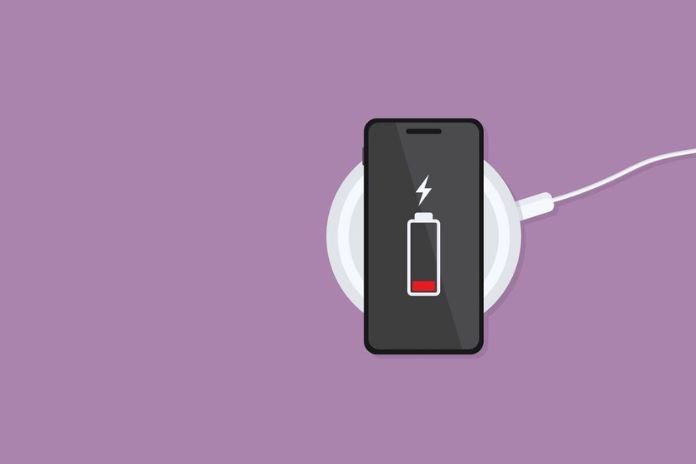Qi Wireless Charging: How Does The Technology Work?
The battery of our smartphones is always a sensitive issue. Needing to last the day in regular use, it forces us to have a charger. But, these connectors are often not very resistant and pose compatibility problems from one standard to another. Qi wireless charging technology represents the future. We make presentations. We had almost buried her.
Qi wireless charging technology seemed doomed to disappear, one good idea among others that failed to convince manufacturers and consumers. Introduced on the market as early as 2009 by Palm Inc, takeovers by major manufacturers have become rare over time. And then came the iPhone X. As we told you a few days ago, Apple’s choice and foreseeable impact on the market should allow its “comeback.” So it’s time for a booster shot.
How Does Wireless Charging Work?
Its activity is generally straightforward. The idea depends on two components. An external charger and your cell phone are furnished with a particular part that goes about as a beneficiary. This charging strategy is by acceptance. This implies that all you need to do is place your cell phone on the charger, and charging begins immediately. A similar framework works for enlistment hobs in your kitchen or electrical transformer.
A safe, attractive field is made between the two sections on a particular electromagnetic recurrence, yet it is normal for all gadgets with the Qi standard. As far as possible, at present it is the most extreme distance: 40 millimeters. Since last year, Belkin has offered a remote charger to re-energize a few gadgets with the Qi standard. These embellishments should duplicate before very long.
Where Does Qi Wireless Charging Come From?
As we told you above, Qi wireless charging technology has been introduced previously. It appeared to the general public in 2009 on the initiative of the company Palm Inc. But it is, above all, the result of the work of the Wireless Power Consortium, which brings together international companies determined to create a standard for the transmission of energy wireless.
The term “Qi” does not refer to the intelligence quotient of your charger. It is a Chinese term that is pronounced “chi” and which means “energy” or even “vital breath.” Among the companies that are part of the Wireless Power Consortium are now 245 international companies, whereas there were only 8 at the start. Currently, a total of 766 products use this technology.
Which Terminals Are Qi-Compatible?
This list is, of course, set to grow in the coming years. But here is the list of smartphones compatible with Qi wireless charging technology released since 2015 that you can find from major brands. If any things need to be added, please let us know.
- HTC 10
- Asus Zenfone 3
- Nokia Lumia 950 and 950 XL
- One Plus 2 and One Plus 3
- One Plus 3
- Meizu Pro 5 and 6
- Meizu Pro 5
- Xiaomi MI5
- Moto Z Force
- LG G4, G5 and G6
- Google Nexus 6P, 5X, Pixel and Pixel XL
- Samsung W2016, Galaxy Note 5, Galaxy S6 Edge Plus, Galaxy S6, Galaxy S7, Note 8, Samsung Galaxy S20 Ultra , Samsung Galaxy S8, etc.
- Apple iPhone 12, iPhone 11, X, iPhone 8 and 8 Plus, 7 and 7 Plus, iPhone SE 2, and iPhone 6S and 6S Plus
- BlackBerry Priv
In total, at least 150 Qi-certified mobiles are already available for sale. This should increase since, concretely, the change is very low for a manufacturer. It is simply a component to be added on top of the battery or in the back cover. You can check if your phone is compatible with this website.
What Is The Future Of Wireless Technology?
Paradoxically, Apple’s choice was made by default. Above all, the company intended to promote its wireless charging system, the “AirPower.” But it is not ready for use due to technical problems. The choice of QI certification, quickly relayed by major brands, should lead to the generalization of this technology by other brands. Recent patents from Apple show that the technology could be directly integrated into future MacBooks to charge iPhones and accessories.
Xiaomi’s announcement to follow the movement so quickly is, in this case, symptomatic of what awaits us. The Xiaomi Mi 7 was the first of the brand to be compatible. But the impact could eventually go beyond smartphones. For the moment, Qi charging is intended for devices with a maximum power of 5 watts, which in addition to our smartphones, includes remote controls or cameras.
Tablets And Laptops In The Line Of Sight?
The Wireless Power Consortium wants to succeed in pushing this limit. The ultimate goal is to work with our tablets, laptops, and home appliances. Some specialists also plan to apply this technology to electric cars, a project notably supported by Volvo and Flanders Drive within the Continuous Electric Drive ( CES ). This project, launched in 2011, could experience renewed interest. The future looks bright for Qi wireless charging technology as the possibilities seem so many.
Read Also: Top 10 Free Cloud Services For Online Storage
Share this content:












Post Comment